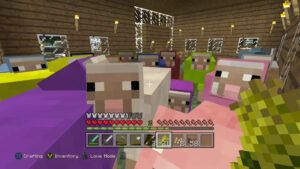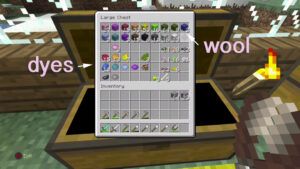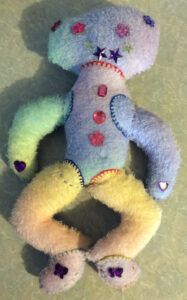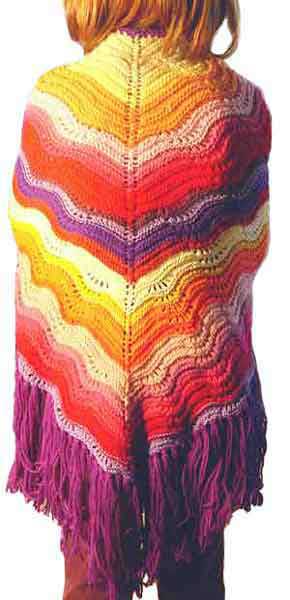From the Brisbane Courier, January 15th, 1925
Knitting a Jumper.
A Man’s Ideas.
A DOCTOR recently said that knitting soothes the nerves, and that a woman who knits never loses her temper. She can’t do it, or she’d strangle herself with the wool. I can foresee the day when the 50,000 spectators at a football match will keep themselves calm by knitting socks all the time, writes the well-known humorist, Robert Magill, in a London journal. Then knitting is so useful. You could spend your time knitting your own waistcoats or socks. Or you could make a nice warm cover for your motor-bike to sleep in, or a tobacco pouch, or a little fancy waist-coat for your fountain pen.
You might even go so far as to knit yourself a valve set, or, better still, you might knit the wife a jumper as a present. It would serve her right for some of the horrible things she gives you.
We will presume that you’ve got the needles and the wool, and a guide to the subject. The instructions in the book will read something like this:
“Cast on 164. Work one in pl K. * K 4 p 33 k 4. Repeat to end of row. (*Sats. Only.) K 2 tog b m. (refreshment car). Tension sl. Kt 4 to Q 6. Mate and win in four moves.”
Now this, although as clear to a woman as a list of racing results is to a man,conveys absolutely nothing to his so-called, intelligence. A word here and there he can translate.
Thus “pl K” means a place kick for a foul, and “p 33” means page 33. “Tog” is easy. It’s what you wear.
“Tension sl” is what the sergeant-major used to say to you, but it doesn’t mean for a moment that you have, to slope needles and present arms with them.
“Repeat to end of row,” is what your wife always does when you have a slight disagreement over breakfast.
The best thing to do is to ignore the instructions and start right from the beginning. First of all you make a loop in the wool, and fix this on one of the needles. It needs a little practice, but you’ll soon learn. Next you push the other needle through the loop.
The loose end of the wool has now got to be looped over the second needle. It helps you to distinguish between the needles if you tie small labels on the ends.
As you’ve already got the wool in one hand and the other needle in the other, the only thing to do is to hold the second needle between your knees. I usually stick one needle in the ground like a wireless mast, so that I can walk round the beast.
The game now is to fiddle round with the right-hand needle until you have managed to pull the loose end of the wool through the loop. It sounds impossible, and, in fact, it’s as difficult as picking up a live eel with a poker.
The wool simply will not come through. You can’t go round to the front and push it through, and if you haven’t got a trained worm who could crawl in after it and fetch it back, as a fox terrier does a rabbit, the only method is to seize it with your teeth. Only, don’t swallow the needles. They cost money.
You now have a second loop through the first. Pull the needle out of it and lay the needle down where you can find it again. The second loop has to be twisted and hooked over the end of the same needle as the first one. Place a cork on the end to stop the loops coming off’. You have now done one stitch.
After a rest you proceed to do another, in the same way. It comes easier in time. I know fellows, experts at the game, who can knit ten stitches in one morning.
Presently you will have a row of stitches one behind the other, but you can’t make a jumper out of them.
What you have to do now is to fasten another of stitches on to the first. It is done by knitting a stitch, but leaving it half done while it is in the air.
There is a peculiar push needed here, and if you don’t do it properly you’ll find that you’ve carefully unknitted your beautiful piece of knitting into, a nice long piece of wool.
On the other hand, if you’ve pushed properly you’ll find at the finish that the knitting has somehow transferred itself on to the other needle while you weren’t looking.
This is what is called plain knitting, although, when you look at it coldly and critically, you would call it anything but plain.
In a jumper, of course, you will need that handsome ribbed effect that looks as though you could strike matches on it, and this is done by alternate plain and purl.
To purl you do all that I have been telling you the other way round, which you have probably been doing all the time.
And that’s all there is in knitting. Now you can get a music-stand and fix the book of words up in front of you, then take the two needles, one in each hand, and the wool in your pocket – and persuade some girl to do it for you. After all, between you and me and the gatepost, what good are girls if they can’t do a simple thing like knitting?







